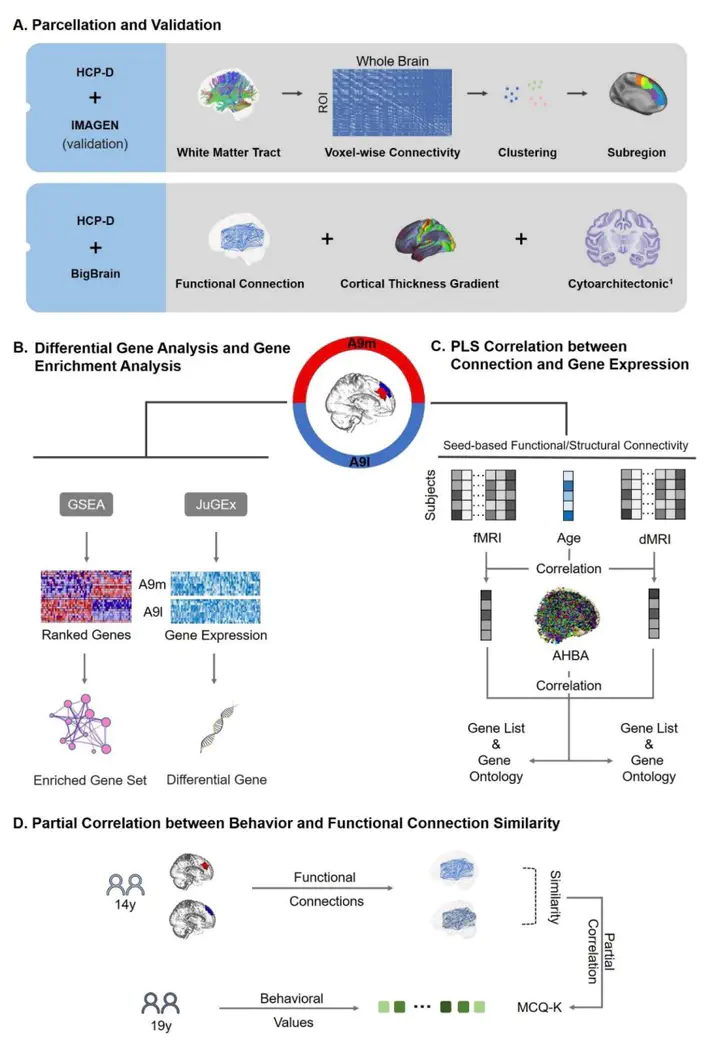Anatomical connectivity profile development constrains medial-lateral topography in the dorsal prefrontal cortex
 Summary of the analysis flowchart
Summary of the analysis flowchartAbstract
The prefrontal cortex (PFC) is a highly variable, evolutionarily expanded brain region that is engaged in multiple cognitive processes. The subregions of the PFC mature relatively late compared with other brain regions, and the maturation times vary between these subregions. Among these, the dorsomedial and dorsolateral prefrontal cortex (dmPFC and dlPFC) share a parallel topographic pattern of functional connectivity, while participating in different types of complex behaviors. However, the developmental trajectories of the two areas remain obscure. In this study, we uncovered differences in the developmental trends of the dmPFC and dlPFC. These differences were mainly caused by structural and functional changes in the medial area of the superior frontal gyrus (SFG). The developmentally different arealization patterns were verified using multiple parcellation approaches with multimodal data, including structural magnetic resonance imaging (sMRI), diffusion MRI (dMRI), resting state functional MRI (rfMRI), and a publicly available transcriptomic dataset. Human brain gene expression data was also used to perform downstream analyses, which could inform us about the potential biological mechanisms underlying the developmentally different arealizations. Furthermore, behavioral analyses hinted at the effects of regionalization on ontogeny. In brief, this study revealed a tendency toward a medial-lateral prefrontal division and can provide a fuller understanding of the potential underlying genetic underpinnings as well as of the potential effects on developmental behavior.